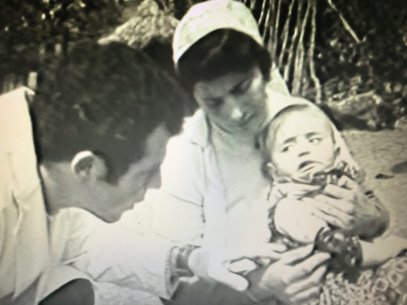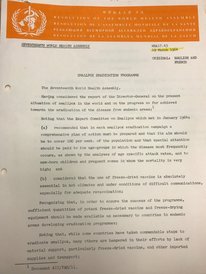(David J. Sencer Museum, 2016)
Vincent Radke explaining how the Smallpox Eradiction Program began (Radke, 2016).
Smallpox Eradication ProgramThe Smallpox Eradication Program started in 1965, when the Soviet Union asked the World Health Organization (WHO) to begin a worldwide smallpox eradication program.
"The World Health Assembly said okay, we're going to make it a goal to get rid of smallpox. But you have ten years to do it. We're going to give you the money, but not all of it. The smallpox program in Geneva is going to have to fund the rest of the time" (Radke, 2016).
|
|
Smallpox was very difficult to eradicate because for "every one person that was infected, at least ten unvaccinated people could become infected" (Smallpox Movies: Training and Education Compilation Disc 1, 1972). With Dr. Foege's ring vaccination, the eradication of smallpox became possible.
"Many smallpox patients were not content to stay in one place until they recovered. One patient with active disease herded his cattle a distance of 300 kilometers within the space of 14 days and in so doing, introduced smallpox into Kenya" (WHO IRIS, 1971-1976).
|

